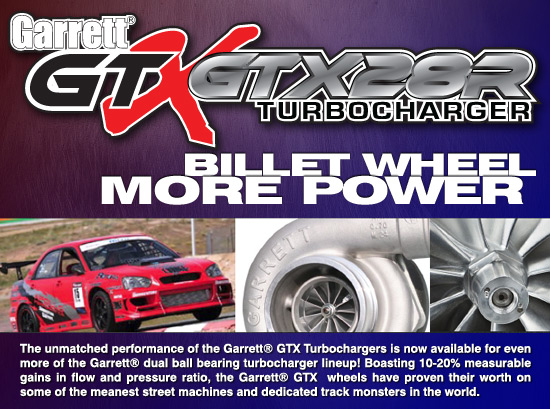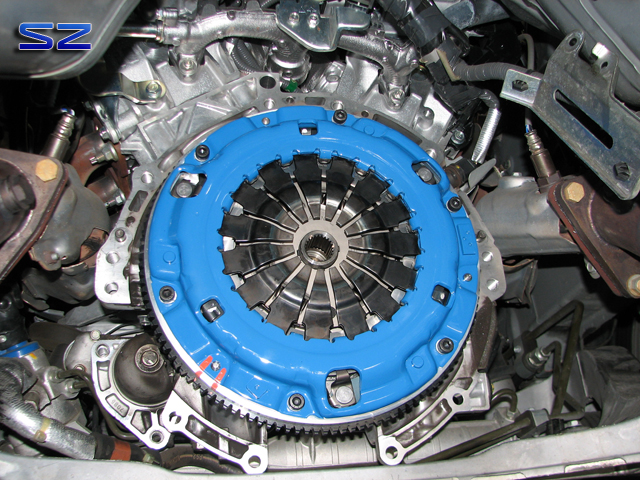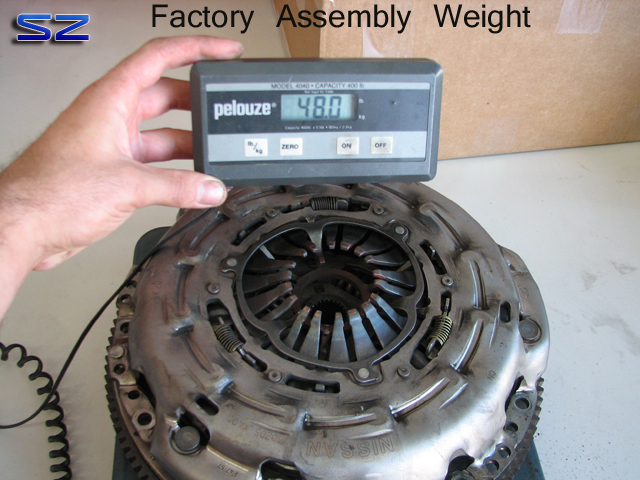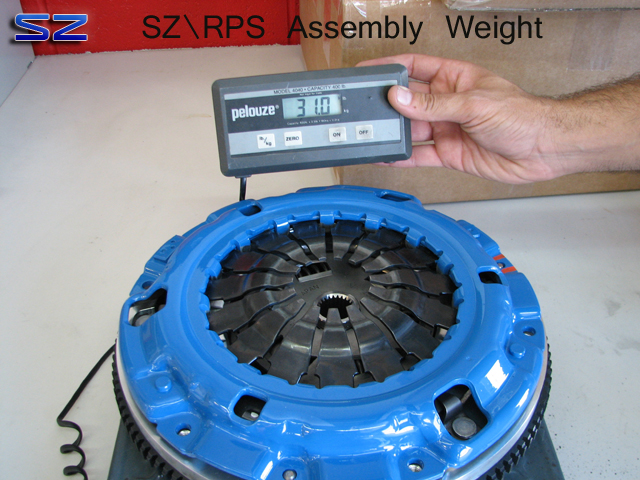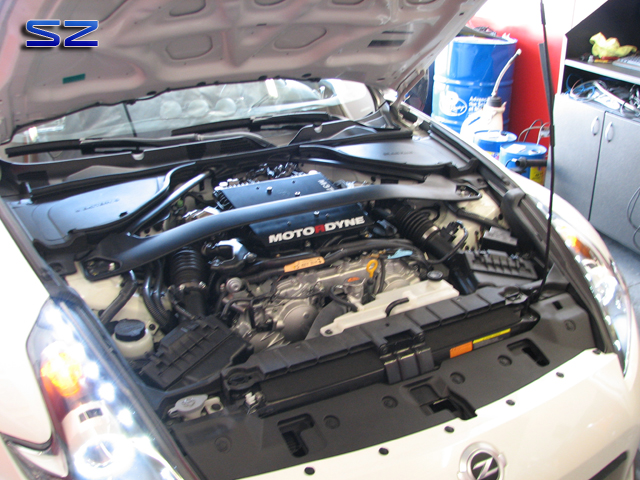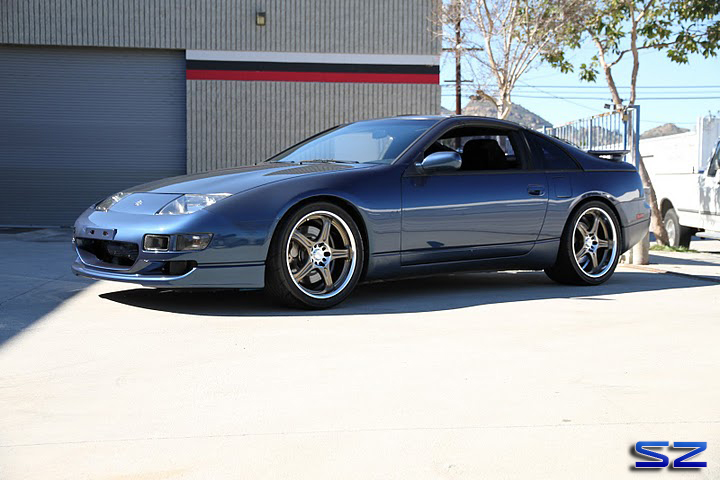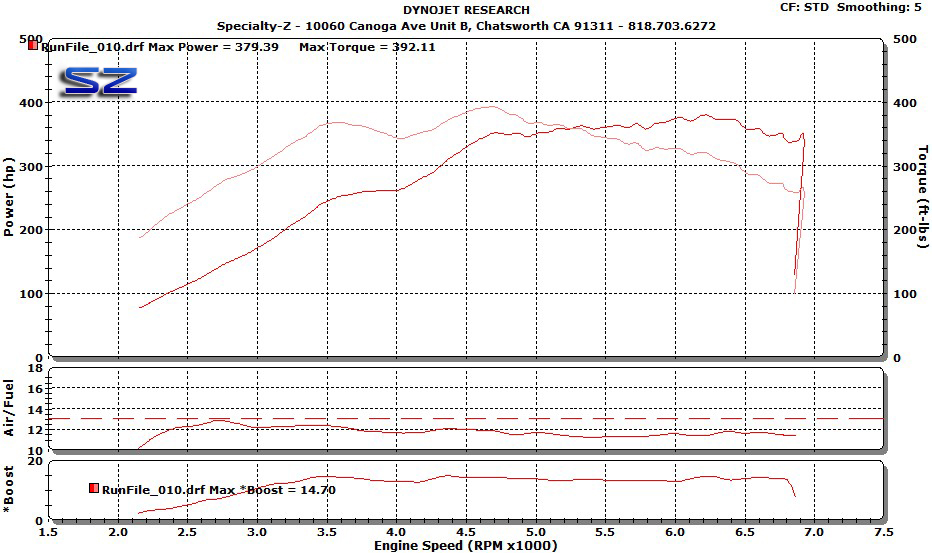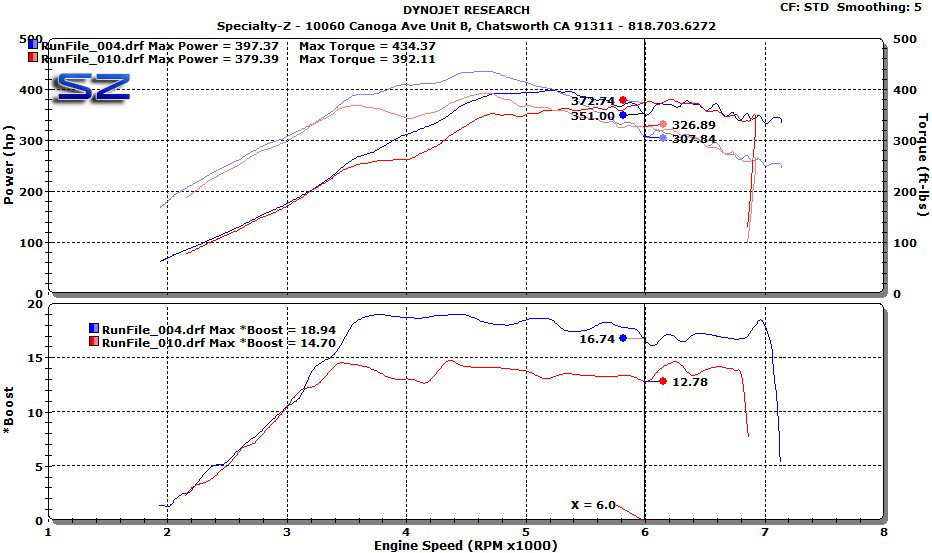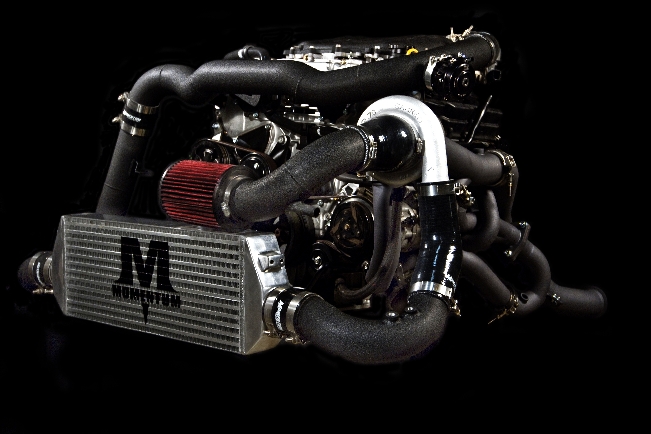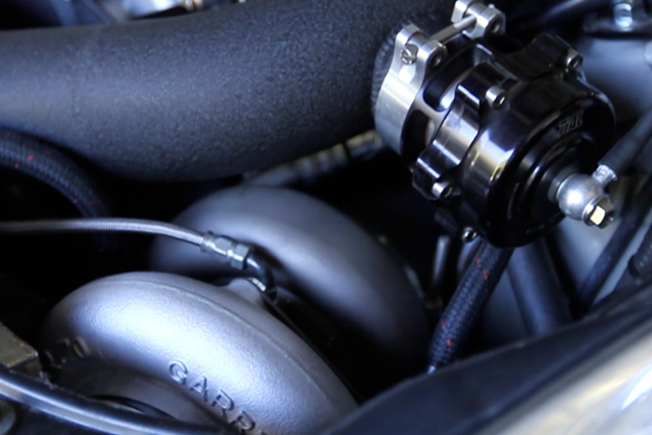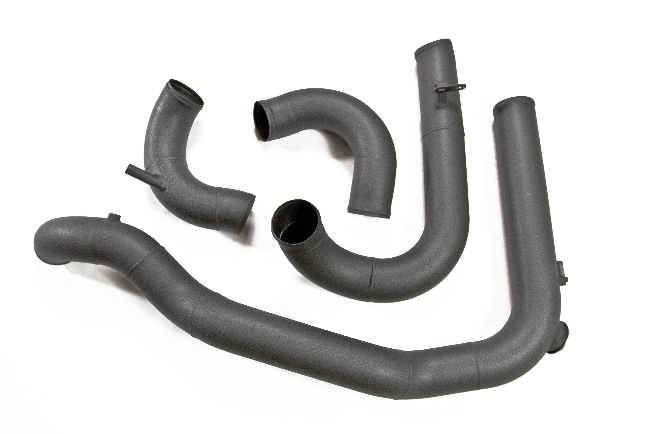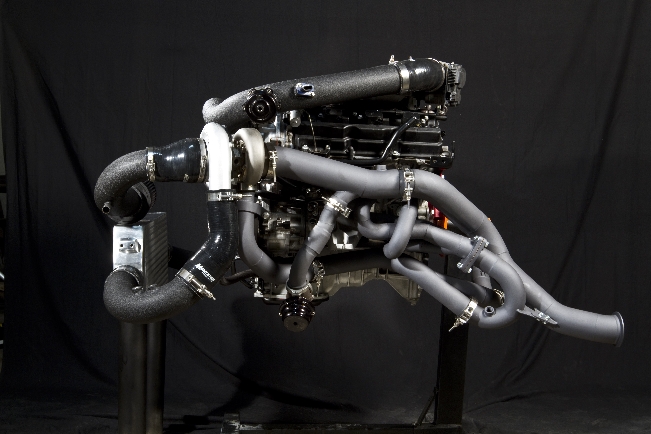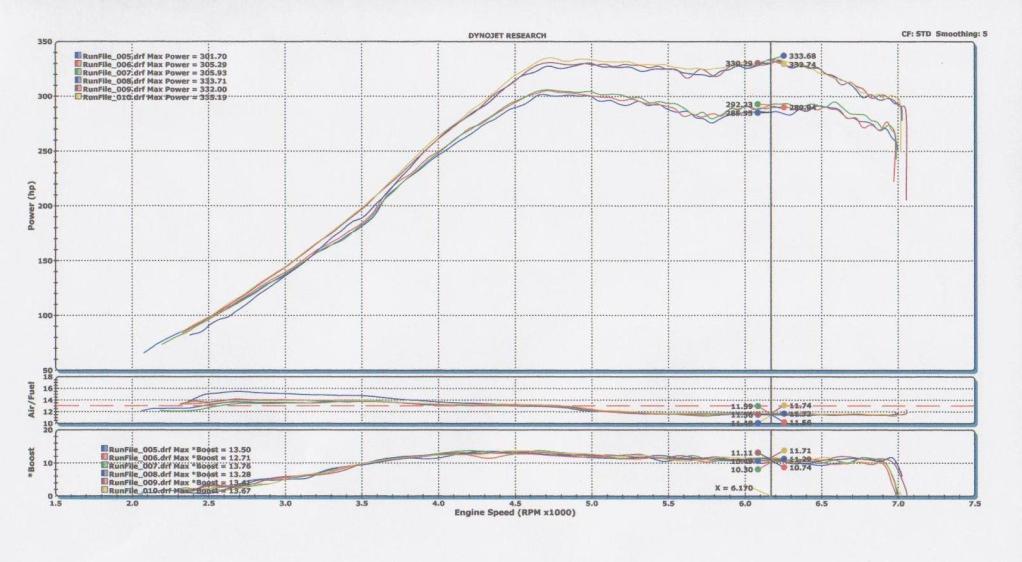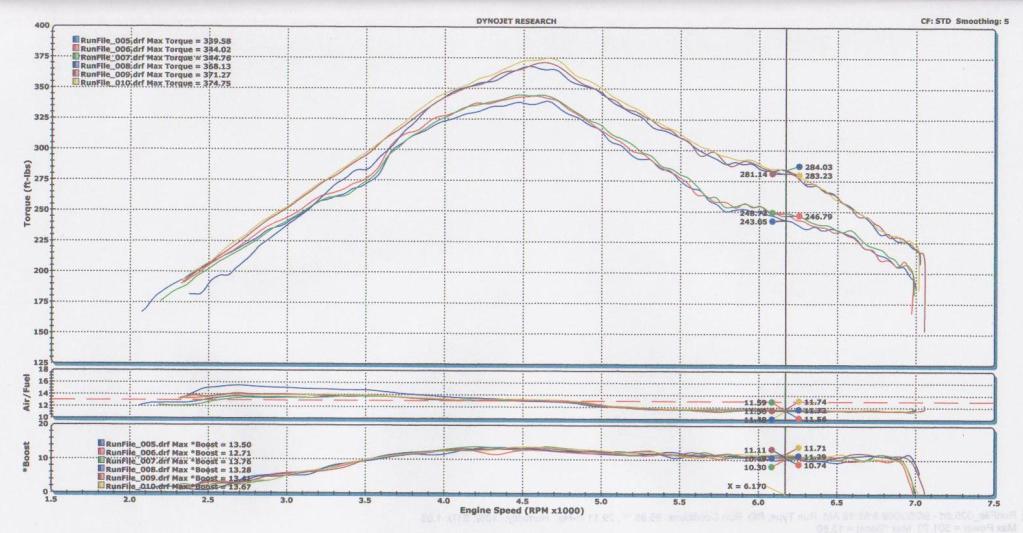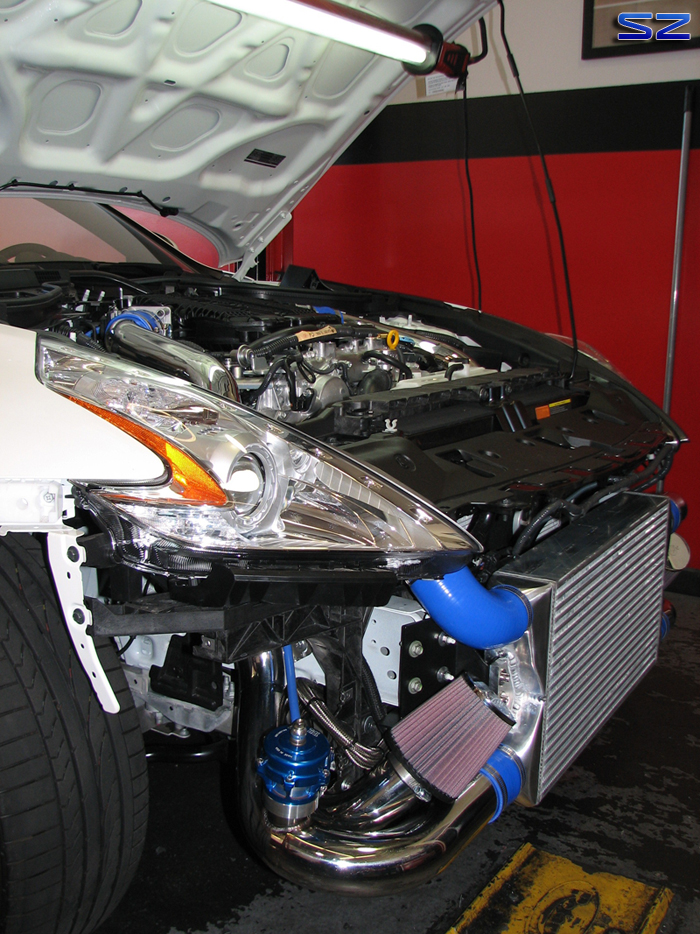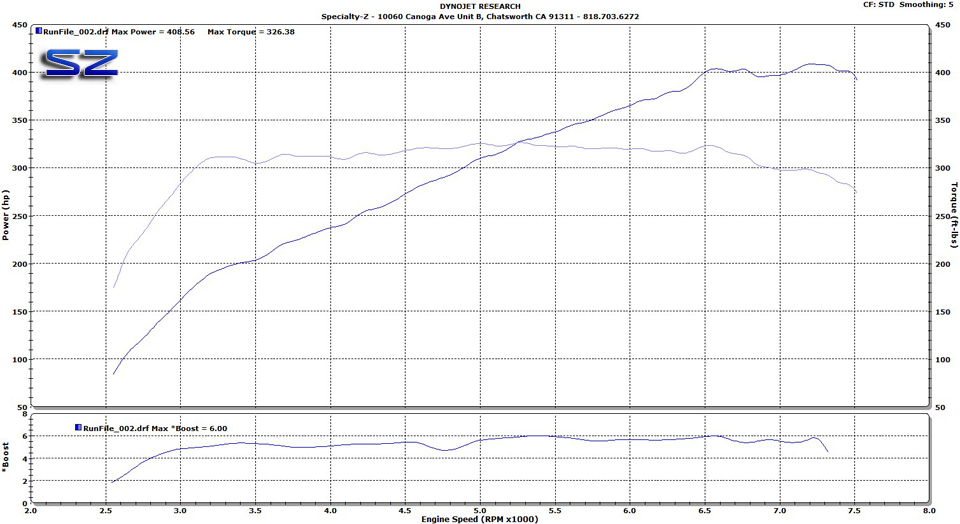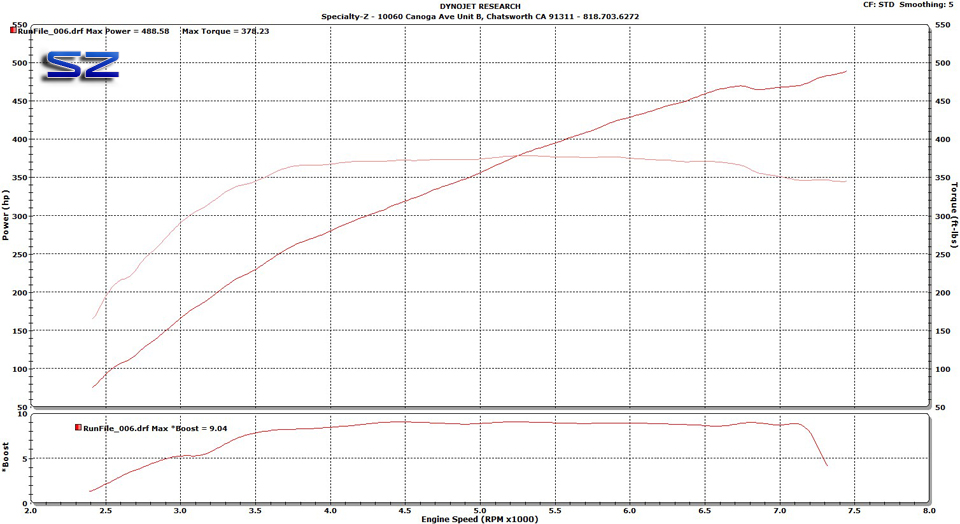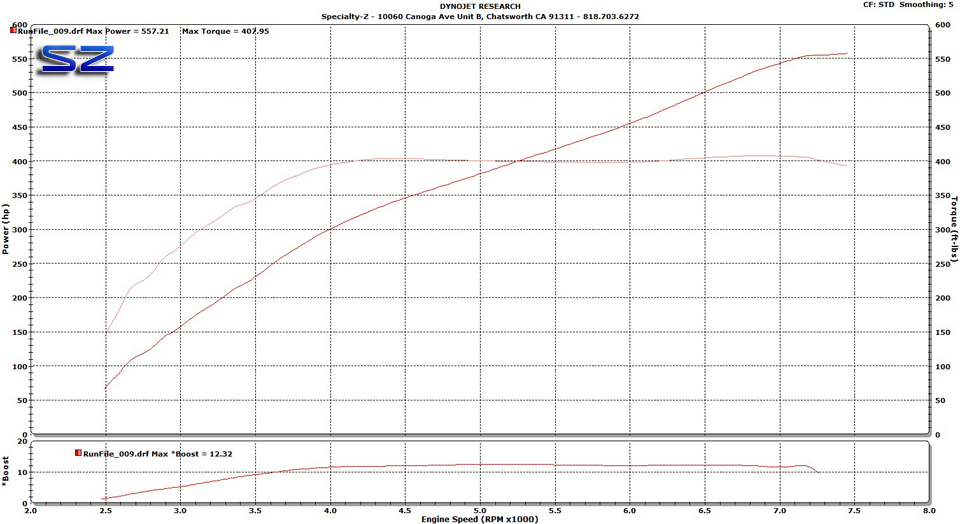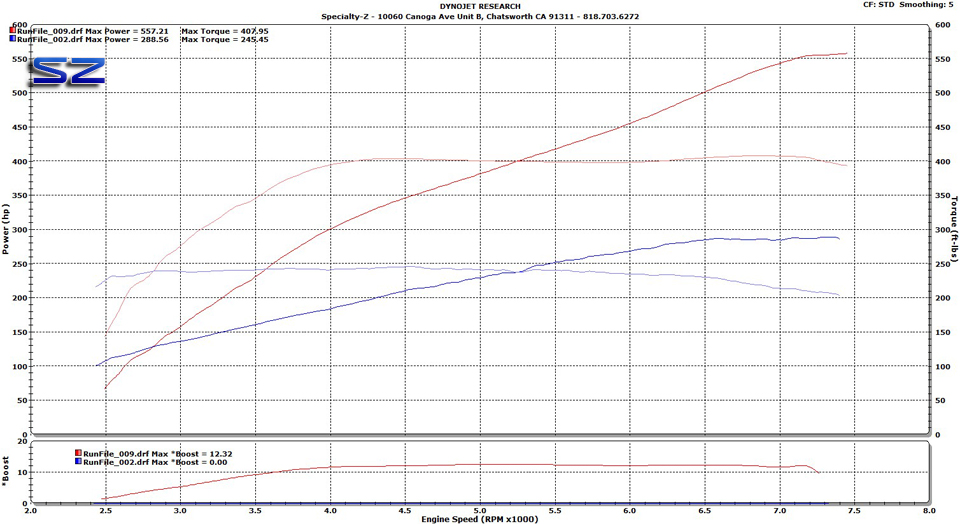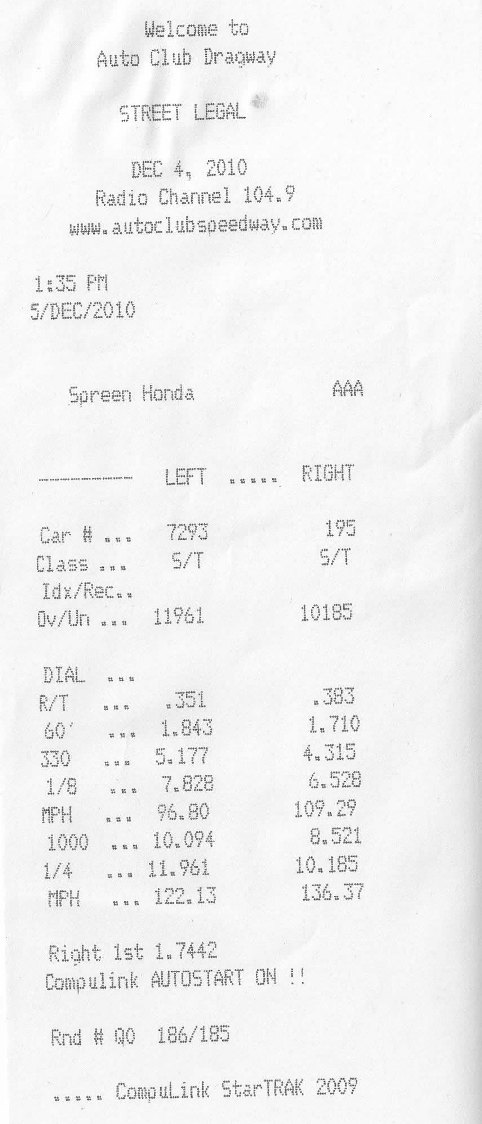While perusing the new products @ SEMA 2011 we stumbled upon an interesting find. You couldn’t find this at the main Garrett booth but we managed to do so elsewhere. At first glance (a really quick glance) it looked like an ordinary GT2860RS. As soon as we took a look at the compressor wheel and inner housing we knew we had a bird of a different feather.
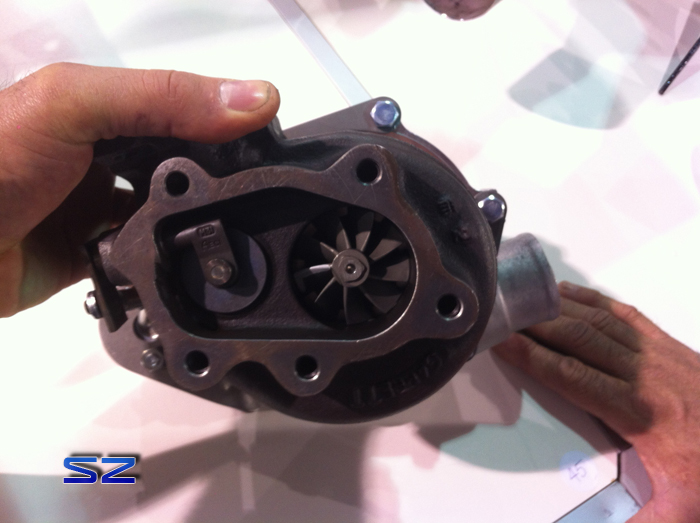 From the back side not much to look at.
From the back side not much to look at.
 Utilizing Garrett’s new adjustable brackets for the wastegate actuator. Not sure if this will be standard.
Utilizing Garrett’s new adjustable brackets for the wastegate actuator. Not sure if this will be standard.
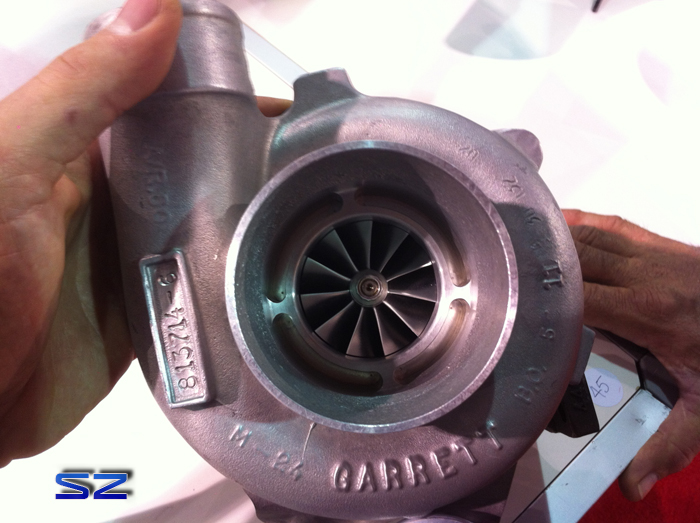 Holy cow Batman! What do we have here! The wheel is totally redesigned. Much more of a straight blade design than what we’re used to seeing. The standard 2860RS (T04B) housing now adds an anti-surge feature. We can assume the wheel is 3mm larger besides being billet. I was tempted to just slip this in my bag…. J\K! I’d need a 2nd one anyway 😉
Holy cow Batman! What do we have here! The wheel is totally redesigned. Much more of a straight blade design than what we’re used to seeing. The standard 2860RS (T04B) housing now adds an anti-surge feature. We can assume the wheel is 3mm larger besides being billet. I was tempted to just slip this in my bag…. J\K! I’d need a 2nd one anyway 😉
 The is the compressor map differentiating between the new 2863RX and the 2860RS we’ve come to love. If this is correct, this turbo can easily make 30+ psi of boost and do it efficiently. This thing looks like it shits on the RS. Let’s hope it comes out and translates to be as good in the real world as it does on paper! I mentioned earlier that these needed to be burst tested but they actually do not. They are ready to be sold and will be shipping out shortly! I can only hope and wish they do this for the T25 flanged 30 series.
The is the compressor map differentiating between the new 2863RX and the 2860RS we’ve come to love. If this is correct, this turbo can easily make 30+ psi of boost and do it efficiently. This thing looks like it shits on the RS. Let’s hope it comes out and translates to be as good in the real world as it does on paper! I mentioned earlier that these needed to be burst tested but they actually do not. They are ready to be sold and will be shipping out shortly! I can only hope and wish they do this for the T25 flanged 30 series.
Some press release from Garrett:
Garrett® GTX wheels feature next-generation aerodynamics, fully machined from forged aluminum alloy. Each wheel is performance tested in stateof-the-art laboratories to insure the best design is used to deliver provable results without guesswork.
Garrett® GTX Turbochargers will be available in several new sizes including GTX2860R, GTX2863R, & GTX2867R.

